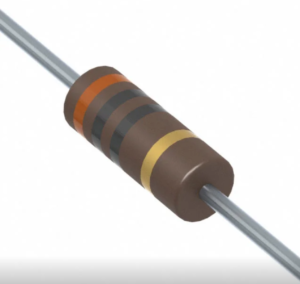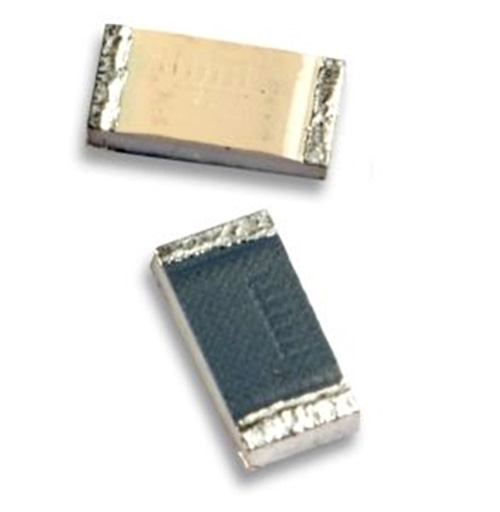In the previous tutorials, we discussed fixed resistors, variable resistors, and dependent resistors. The fixed resistors with a power rating of 5 W or above are classified as power resistors. The purpose of these resistors in a circuit is not to offer resistance. These resistors are assembled in a circuit only for power dissipation because they can dissipate power only in the form of heat and have high thermal conductivity. These are often assembled with heat sinks attached to them or with air or liquid cooling provisions. The only purpose of using a heat sink, air cooling or liquid cooling is to maximize the heat dissipation capacity of these resistors. They are also designed in such a way that they remain compact in size while capable of maximum power dissipation.
There are the following main types of power resistors
1) Wirewound
2) Grid
3) SMD
4) Water
5) Liquid Rheostats
Wirewound Power Resistors
Wirewound resistors are known for high precision and stability. There are wirewound resistors that can withstand temperatures as high as 450°C. These resistors are made by winding a resistive wire around a ceramic, plastic, or fiberglass core. Metal caps and leads are attached at either end of the winding for circuit connections. The winding is coated with a non-conductive plastic or enamel paint to protect the resistor against humidity and other environmental wear and tear.

Example of a wirewound power resistor (Image: Stackpole).
The resistive wire used for winding is usually made up of an alloy like Nichrome or Manganin. The wirewound power resistors can have three types of windings — helical (spiral) winding, bifilar winding, and edge winding. In helical winding, the resistive wire is wrapped in a helix around a cylindrical core. This type of winding is easy to make, but have the major disadvantage of induced inductance due to coil like construction. In bifilar winding, the resistive wire is wrapped around the non-conductive core in two opposite directions. This cancels the total inductance due to winding. In edge winding, the resistive wire is wrapped by its wider edge. The edge wound power resistors generally do not have a core and have air cooling provision.
Wirewound power resistors are suitable for high power, high precision applications. Typical wirewound power resistors (helical type) are used for power dissipation as high as 50 W, while edge wound resistors are used for power dissipation as high as 3.5 kW. However, these resistors are not suitable for high-frequency applications. Generally, wirewound resistors should not be used in circuits involving signal frequencies above 50 KHz. Check out this Resistor Selection Reference Table for more information.
SMD Resistors

Example of SMD resistors (Image: TT Electronics)
There are SMD or chip resistors which can dissipate power as high as 450 W. As wirewound resistors are not suitable for high-frequency applications, SMD resistors can be used in high frequency, high power circuits. These resistors are typically used in electronic applications around 5 Watt rating. However, SMD power resistors are not as precise as wirewound resistors and have typical tolerance around 20%. SMD Power Resistors are made by depositing a resistive coating on a non-conducting ceramic substrate. These resistors mainly come in two types — Thin Film and Thick Film SMD resistors. The resistive material used in their construction can be carbon, metal, metal oxide, cermet, or metal foil. Some SMD resistors also come available in wirewound construction. The SMD resistors used in high power applications essentially need some cooling mechanism like heat sinks, air cooling (air cooling fans like used in computer motherboards) or liquid cooling like those used in high power graphic cards.
Grid Resistors
Grid resistors are built by assembling a matrix of resistive metal strips between two electrodes. These are bulky electrical resistors and can have a current rating as high as 500 A. They are generally used as brake resistors and load banks in trains and electric generators and can have a resistance as low as 0.04 ohms to as high as few megaohms. These resistors are only used to channel thermal dissipation in braking of rail vehicles or for harmonic filtering in electric substations. Typical power dissipation is around 100 kW.
Water Resistors
Water resistors are made of tubes filled with saline or copper sulfate solutions which are attached between two electrodes. As water is a good conductor of electricity, by varying the concentration of appropriate salts in water, it can be used as resistive material. Water is also a good conductor of heat which enables water resistors with high thermal conductivity and high power dissipation capacity. High power water resistors use copper sulfate solutions instead of salt solutions. Water resistors are used in electrical applications requiring typical power dissipation above 500 mW. They do not dissipate the rated power instantaneously; instead, they dissipate large amounts of power (heat) over a specified time period.
Liquid Rheostats
Liquid rheostats are a type of variable water resistors. These are still used in some electric generators. These are constructed by immersing electrodes in a saline solution where the position of electrodes can be changed to vary the effective resistance.
Power resistors are not used in regular electronic circuits, except in some SMD resistors in specific computer and server circuits. These resistors were introduced in this article to present the magnitude of electrical applications of resistors and the use of the property of resistance. In the next article, we will discuss capacitors.
Filed Under: Featured Contributions


Questions related to this article?
👉Ask and discuss on Electro-Tech-Online.com and EDAboard.com forums.
Tell Us What You Think!!
You must be logged in to post a comment.